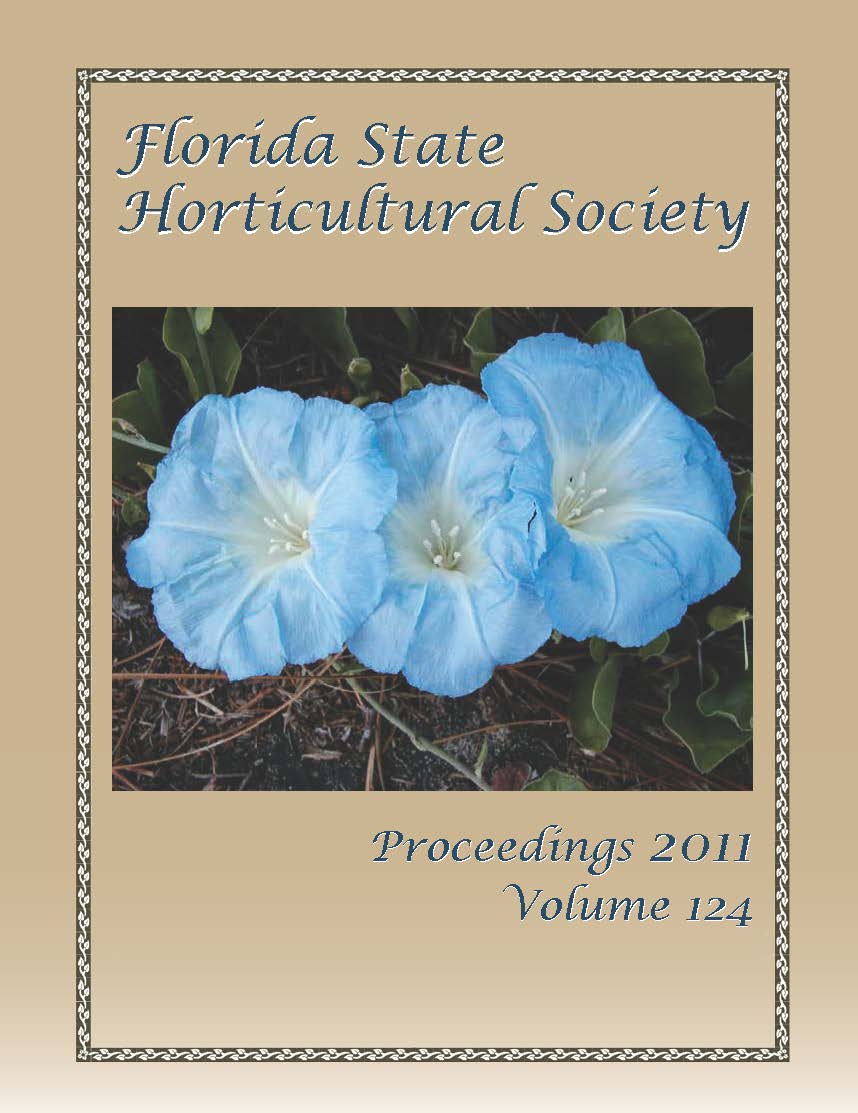Abstract
Citrus canker caused by the pathogenic bacterium, Xanthomonas citrisubsp. citri (Xcc) , poses a serious threat to citrus production in Florida, especially for the fresh fruit market. Xcccauses severe damage to fruit, stem, and leaf tissues, and although much has been learned about the complex interactions between the infecting bacteria and these citrus plant tissues, chemical responses in host trees to this infection has yet to be fully explored. To address this issue, initial investigations were made of the changes in the phytochemical compositions of canker-infected leaves of greenhousegrown grapefruit trees. These changes were monitored by HPLC-fluorescence spectroscopy, where particular attention was given to the detection of coumarins (C) and furanocoumarins (FC). Such analyses showed that physical abrasion of grapefruit leaves dramatically decreased the levels of certain Cs and FCs, and that subsequent Xccinfections triggered the production of other Cs and FCs.

